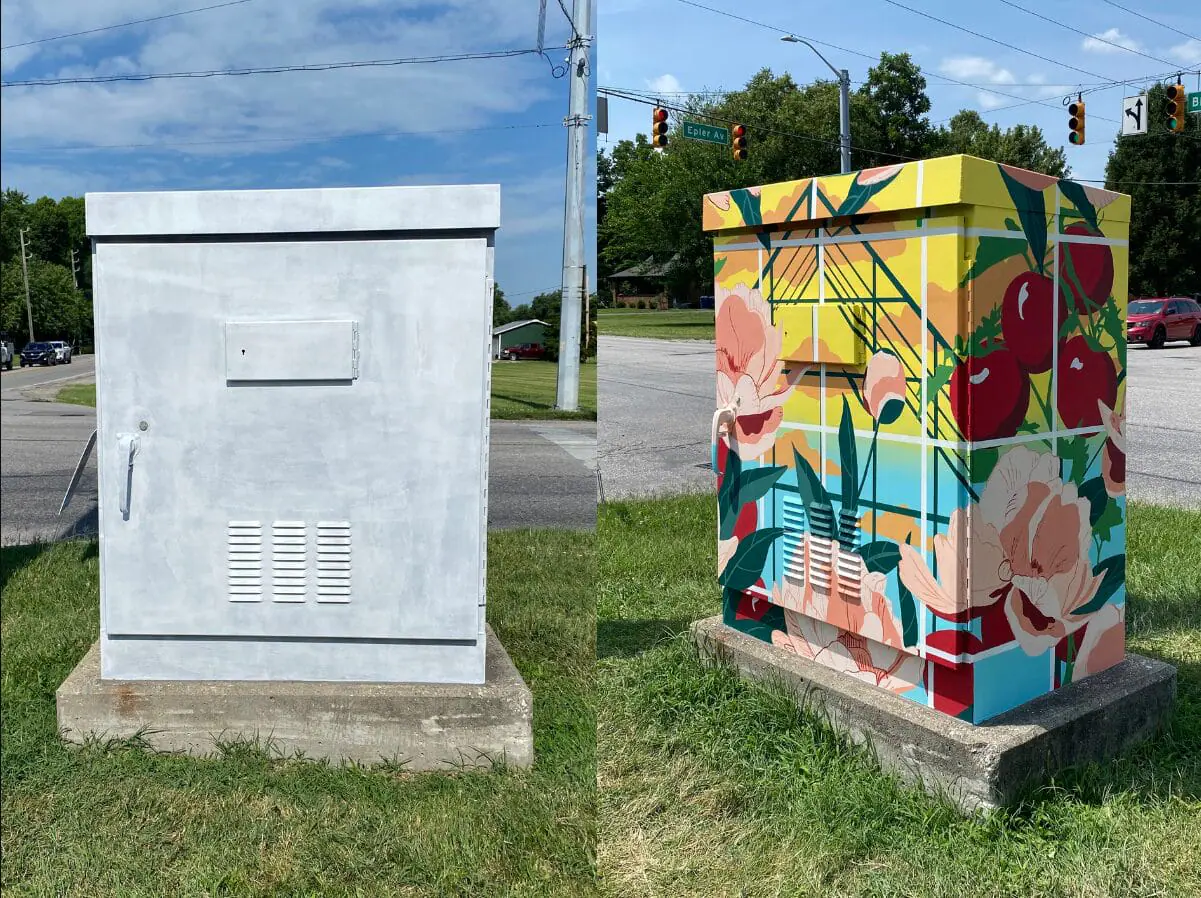Turn those boring gray signal boxes on street corners into works of art
(MIRROR INDY) — Have you seen the big gray metal boxes on street corners? They’re traffic signal boxes, and they can be turned into public art that tells the story of your neighborhood.
Christina Hollering, an artist and a professor at IU Indianapolis’ Herron School of Art and Design, painted one in the Southdale neighborhood this summer. The box blooms with peonies and tomatoes, as an ode to the Germans who settled in the Southdale neighborhood and built greenhouses.
The Indy Arts Council can help neighborhood groups connect with artists on these projects, which can create a sense of place and connect neighborhoods to their history – or just showcase a cool piece of art.
How to get started
You might be thinking, “Why can’t I just walk up to a signal box and paint it?”
Those boxes are owned by the city of Indianapolis. Plus, paint won’t stick to the box without several coats of a special primer.
Most often, neighborhood associations take the lead on these projects and reach out to the Indy Arts Council, which can help you find an artist, , fill out all the paperwork and get the right approvals.
The process can take about six months. Start by scheduling a meeting with Julia Muney Moore, the arts council’s public art director, at jmoore@indyarts.org. The Arts Council receives frequent inquiries about signal boxes, and works on four to eight projects a year.
How the process works in five steps
1. Decide on your idea and plan.
Though these are community projects led by neighborhood groups, residents or artists can suggest ideas. Together, the group should choose which signal box (or boxes) should be painted, decide what they’re looking for in an artist, discuss inspiration for a design and create a timeline.
It’s also important to set a budget for paying the artist. Costs range from $750 to $1,200 for a hand-painted box to $1,500 to $2,000 for a vinyl wrap. Neighborhoods usually crowdfund or look for grants.
Then, pick one person from your neighborhood group to stay in contact with the Arts Council.
2. Get approval from the city and the landowners.
Just a warning: This is the part that takes the most time. You have to get written permission from the people who own the land on all four street corners surrounding the traffic signal box. (Which is different from the people who own the businesses on the property.) Landowners might live out of state and can be hard to reach.
The Arts Council will also help you get in contact with the city’s Department of Public Works (DPW) and sign a document called a memorandum of understanding.
Moore can walk you through all the paperwork/forms that needs to be submitted.
- Application
- Budget
- Timeline
- Box request, with the location and pictures of the box or boxes
- Signed memorandum of understanding from the Department of Public Works.
- Signed letters of support from the neighborhood association and the landowners.
Artwork designs and signed artist agreements can come later, but have to be submitted at least four weeks before the boxes will be painted.
4. Choose an artist, raise money and select the design.
Maybe you already have an artist in mind. If not, the Arts Council can put out a call for artists through its website and Artist Opportunities newsletter. You’ll work with the artist to develop concepts for a design.
5. Paint – or wrap – the box, and enjoy!
The artist will paint the box or wrap it with vinyl, then send pictures to the Arts Council. Enjoy the new public art in your neighborhood!
Mirror Indy reporter Sophie Young covers services and resources. Contact her at sophie.young@mirrorindy.org.
